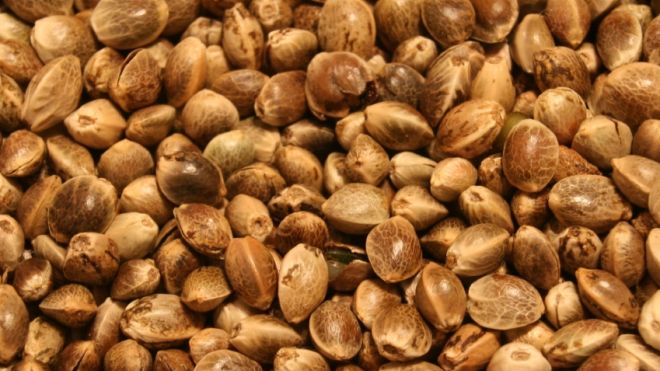Medicinal use of ginger dates back to ancient China and India. Once its culinary properties were discovered in the 13th century, use of this herb became wide spread throughout Europe. In the Middle Ages, it held a firm place in apothecaries for travel sickness, nausea, hangovers, and flatulence. Its pungent properties also contribute to its pharmacologic activities. Ginger contains cardiotonic compounds known as gingerols, volatile oils, and other compounds gingerdione, zingerone, and zingibain.
The root has antiemetic effects that result from its carminative and absorbent properties and its ability to enhance GI motility. Large doses exert positive in otropk effects on the cardiovascular system. Anti-inflammatory effects may result from ginger’s ability to inhibit rostaglandin, thromboxane, and feukotriene biosynthesis; antimigraine effects, from ginger’s ability to inhibit prostaglandins and thromboxane. An tithrombotic effects may result from ginger’s ability to inhibit platelet aggregation. The volatile oil may have antimicrobial effects.
Ginger is available as candied ginger root, fresh root, oil, powdered spice, syrup, tablet, tea, and tincture. Common trade names include Alcohol-Free Ginger Root, Caffeine Free Ginger Root, Ginger Aid Tea, Ginger Kid, GingerMax, Ginger powder, Ginger Root, Quanterra Stomach Comfort, Travellers, Travel Sickness, and Zintona Rhizome.
Reported uses
Ginger is used most commonly as an antiemetic to treat motion sickness, morning sickness, and generalized postsurgical nausea. It’s also used to treat colic, flatulence, dyspepsia, and indigestion. Ginger is used as an anti-inflammatory for those with arthritis and as an antispasmodic, and for its antitumorigenic activity in patients with cancer. It’s used to treat upper respiratory tract infections, cough, and bronchitis. Topically, fresh juice of ginger is used for treating thermal burns.
Administration
- As an antiemetic: 2 g of fresh powder by mouth taken with some liquid; total daily recommended dose is 2 to 4 g of
dried rhizome powder
- For arthritis: 1 to 2 g every day
- For chemotherapy-associated nausea (in the absence of narcotic anesthesia or analgesia): 1 g before chemotherapy
- For migraine headache or arthritis: Up to 2 g every day
- For motion sickness: 1 g by mouth 30 minutes before travel, then 0.5 to 1 g every 4 hours; dosage may begin 1 to 2 days before trip
- Infusion: To prepare, steep 0.5 to 1 g of herb in 150 ml of boiling water, and then strain after 5 to 10 minutes (1 teaspoon = 3 g of drug).
Hazards
Adverse reactions associated with ginger include central nervous system (CNS) depression and increased bleeding time with large doses. It may cause heartburn. Ginger may interfere with hypoglycemic drugs due to its hypoglycemic effects. Use with anticoagulants and other drugs or herbs that can increase bleeding time may further increase bleeding time.
Patients with gallstones or with an allergy to ginger should avoid use. Pregnant women and those with bleeding disorders should avoid using large amounts of ginger. Patients taking a CNS depressant or an antiarrhythmic should use with caution. Patients with diabetes or blood pressure problems should also use with caution.
Safety Risk The use of ginger in large doses has been associated with cardiac arrhythmias.
Clinical considerations
- Adverse reactions are uncommon.
- Monitor patient for signs and symptoms of bleeding. If patient is taking an anticoagulant, monitor PTT, PT, and INR carefully.
- Use in pregnant patients is questionable, although small amounts used in cooking are safe. It’s unknown if ginger is excreted in breast milk. If patient is pregnant, advise her to consult a knowledgeable practitioner before using ginger medicinally.
- Ginger may interfere with the intended therapeutic effect of conventional drugs.
- If overdose occurs, monitor patient for arrhythmias and CNS depression.
- Educate patient to look for signs and symptoms of bleeding, such as nosebleeds or excessive bruising.
- Advise patient to keep ginger away from children and pets.
- Tell patient to notify pharmacist of any herbal or dietary supplement that he’s taking when obtaining a new prescription.
- Advise patient to consult his health care provider before using an herbal preparation because a conventional treatment with proven efficacy may be available.
Research summary
Clinical trials have examined ginger’s antiemetic effects related to kinetosis (motion sickness), perioperative anesthesia, and hyperemesis gravidarum; however, little is known regarding its pharmacology in these settings. Other trials have shown no significant differences among ginger, antiemetics, and placebo with regard to gastric as well as nongastric symptoms. Two separate investigations showed no effect of ginger on CNS impairment caused by kinetosis, as subjects retained the ability to perform certain head and eye movements.
Another placebo-controlled study compared ginger with scopolamine in several subjects. Ginger partially inhibited and stabilized tachygastria but did not effect EGG amplitude. The authors concluded symptoms of motion sickness can be dissociated from gastric electrical activity and that the partial tachygastric effects of ginger offer little to relieve the onset of severity of these symptoms.
In another study, ginger was compared with metoclopromide and droperidol in the prevention of post-operative nausea and vomiting. Findings supported previous studies: ginger and metoclopromide were equally effective and were more effective than placebo in reducing its incidence. The need for post-operative antiemetics was significantly reduced in those receiving ginger over the placebo group.
In studies comparing droperidol and ginger, incidence of post-operative nausea and vomiting was not statistically significant. However, the figures did appear to have potential clinical importance.
Other subjective studies have been done regarding ginger use for hyperemesis gravidarum, with greater symptomatic relief being observed compared to placebo.
Another case report of SSRI administration described the successful use of ginger to alleviate nausea and disequilibrium associated with abrupt discontinuation or intermittent noncompliance of the drugs.
There are currently no reports of severe toxicity in humans from the ingestion of ginger root. However, there is no convincing evidence regarding the safety of ingesting large amounts of ginger by pregnant women. The FDA considers ginger a food supplement, generally recognized as safe.
